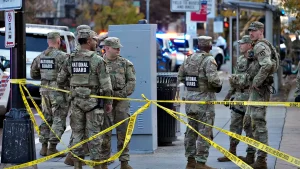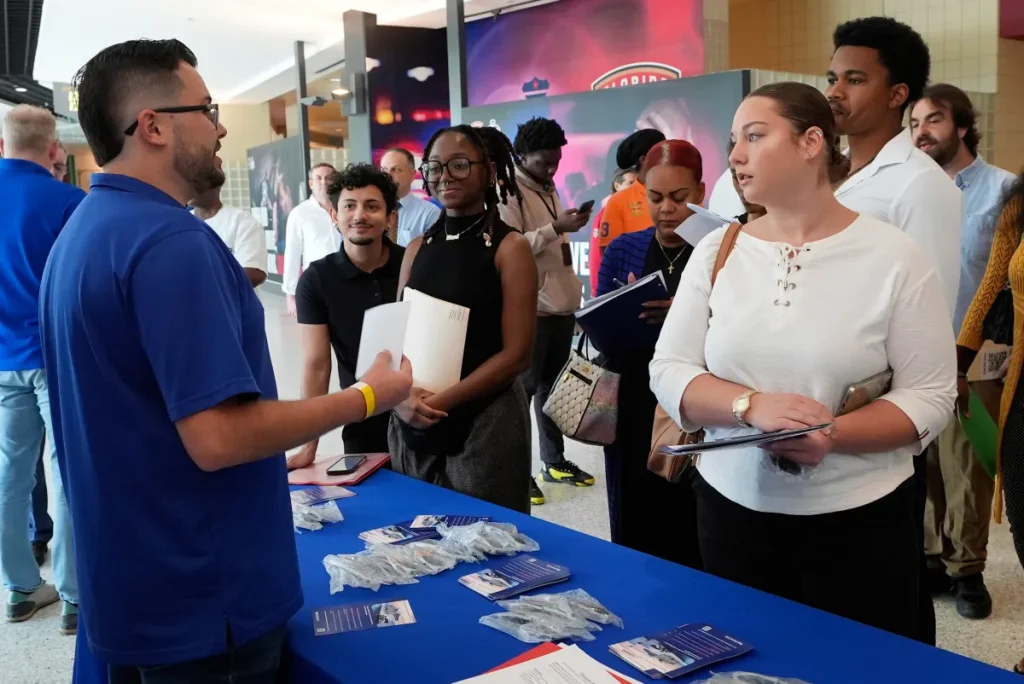The Silent Employment Crisis in America: A Gradual Erosion of Job Security
Despite recent data suggesting some improvement, America’s labor market is experiencing a slow but significant deterioration that many have failed to notice. As University of Michigan economics professor Justin Wolfers aptly described it, unemployment has been creeping up “a tenth of a point here, a tenth of a point there” – seemingly minor monthly increases that have cumulatively shifted the country from a tight labor market to a noticeably weaker one. This gradual change, like slow drips filling a bucket, has transformed into a substantial challenge for American workers who are increasingly facing employment uncertainty. The September jobs report showed the economy adding 119,000 jobs, more than doubling forecasts, but this backward-looking data doesn’t erase the concerning summer trends or the fact that unemployment has reached a four-year high of 4.4 percent.
The deterioration in employment conditions comes at a particularly difficult time for American workers who are simultaneously battling elevated inflation and record-high personal debts. This financial pressure cooker has led to plummeting consumer confidence about both present circumstances and future economic prospects. Recent surveys reveal Americans expressing “reduced confidence across jobs, incomes, and financial situations,” with expectations about labor market conditions through mid-2026 remaining “decidedly negative,” according to Dana M. Peterson, chief economist at the Conference Board. These anxieties aren’t unfounded – while the White House celebrated September’s jobs report as proof that “President Trump’s pro-growth, America First agenda is already making great progress,” many economists remain cautious about interpreting this single report as evidence of recovery.
More recent indicators suggest the employment situation continued to weaken through October and November. Preliminary estimates from payroll processing firm ADP indicated that private employers eliminated an average of 13,500 jobs weekly during the four weeks ending November 8 – a troubling sign of ongoing contraction rather than expansion. Mark Hamrick, senior economist at Bankrate, acknowledged that while September’s stronger-than-expected payroll growth helps “quell recession fears,” there remain “less than comforting signs” in the rising jobless rate and the downward revisions to previous months’ data. Perhaps most concerning is what Hamrick called “an ongoing and concerning trend… the lack of sectors with healthy job creation,” suggesting the weakness isn’t isolated to particular industries but is becoming more widespread throughout the economy.
The factors driving this employment slowdown are multifaceted, involving both technological disruption and broader economic headwinds. Job cuts, once viewed as a “firewall” against recession, have risen in recent months, partly driven by artificial intelligence adoption across various sectors. Companies are increasingly turning to automation and AI solutions to reduce labor costs, creating a structural shift in employment needs that may persist regardless of other economic conditions. This technological transformation is occurring against a backdrop of broader economic challenges, including persistent inflation pressures that have eroded purchasing power and elevated interest rates that have increased borrowing costs for businesses and consumers alike. The combination of these factors has created a perfect storm for American workers, who find themselves caught between technological displacement and macroeconomic pressures.
The true severity of the employment situation may actually be understated due to data collection issues. The Department of Labor confirmed it will not release a full jobs report for October because of disruptions caused by the government shutdown. While payroll data will eventually be included alongside November’s report on December 16, this will not include an unemployment rate for October, creating a significant gap in understanding recent labor market dynamics. As Wolfers emphasized during an MSNBC appearance, “Unemployment is and has been rising in the United States… It’s risen slowly enough that it hasn’t attracted much attention… very soon though you’re talking about very big changes in people’s realities.” This lack of comprehensive, timely data makes it difficult for policymakers, businesses, and workers to fully grasp the extent of the challenge or to develop appropriate responses.
What makes this employment crisis particularly concerning is its gradual nature, which has allowed it to develop without triggering the kind of immediate response that a sudden spike in unemployment might provoke. As Wolfers noted, the current unemployment rate is at a four-year high, and except for the pandemic-induced spike, it would represent an eight- or nine-year high. This slow deterioration has significant implications for millions of American workers who face increasing job insecurity, stagnant wages, and diminishing opportunities for advancement. The combination of these employment challenges with broader economic pressures has created a precarious situation for many households, particularly those already living paycheck to paycheck. Without targeted interventions to address both the immediate employment weakness and the longer-term structural shifts in the labor market, this silent crisis threatens to undermine the economic well-being of a substantial portion of the American workforce for years to come.















